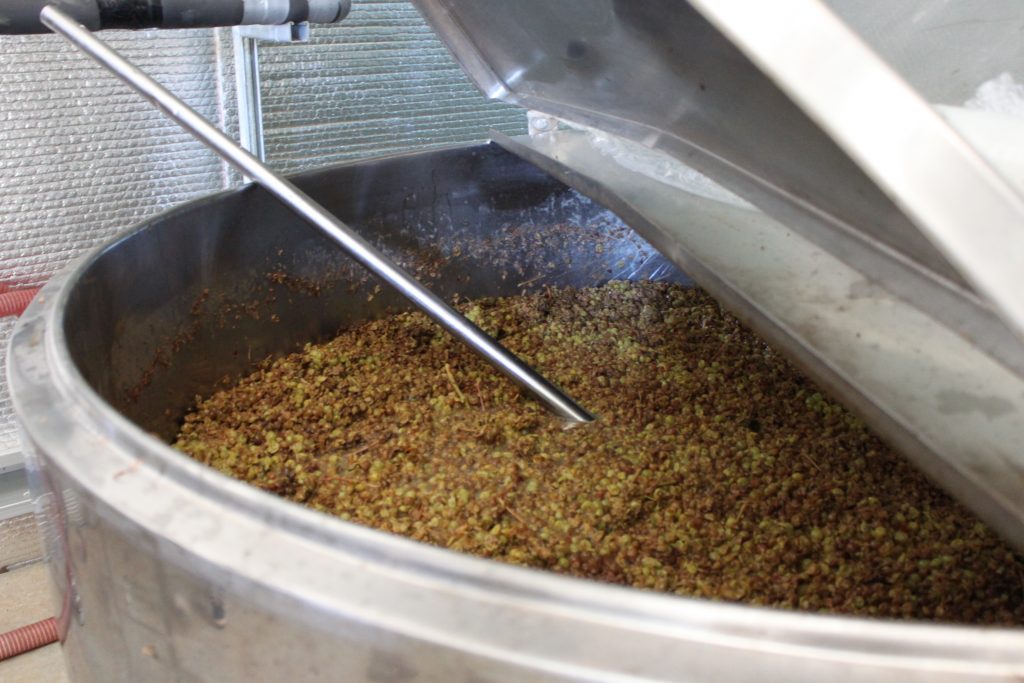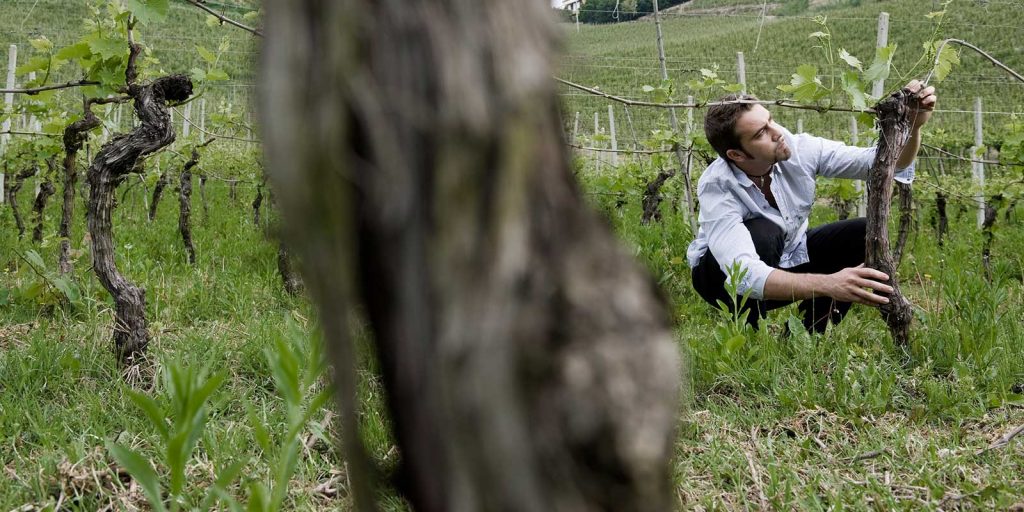Here is a lexicon of definitions of key wine words. The definitions are not intended to be scientifically objective and, in many cases, will be somewhat simplistic. Some will describe the technical side of wine(s), others will examine the more abstract and aesthetic ideas behind wine.
Previously: A’s, B’s, C’s, D’s , E’s, F’s, G’s, H’s, I’s and J,K,L’s (that’s right, this is so unalternative we’re even posting alphabetically…)

M
Maceration. The process whereby the phenolic contents of the grapes such as tannins, colouring agents (anthocyanins) and aromatic and flavour compounds—are leached from the grape skins, seeds and stems into the must. This process both softens and extracts, and in red wines draws out the colour into the must. The longer the period of maceration (which is often aided by punch-downs and pump-overs) the more phenolics are extracted and the more tannic the wine will become. Maceration is increasingly being used with so-called white grape varieties, also known as skin contact wines, and when the colour of the wine in question merits it, amber or orange wines. Maceration may enhance the body and mouthfeel of the wine and give it complexity and ageing potential. However, as with anything in wine, it requires grapes of excellent quality.
Maderised. Deriving from the process of maderisation which formerly involved deliberately heating the wine in the barrel and subsequent oxidation of wine which gave the wine its longevity (as in Madeira). Now, used in the sense of a wine fault, as when a white wine turns older it may begin to maderise, becoming brown in colour and exhibiting oxidised aromas and flavours (similar to Madeira or sherry). Most maderised wines have gone past the point of no return, but certain oxidative wines (made deliberately so) can be very fine.
Malolactic Fermentation. Malolactic fermentation is a secondary fermentation involving bacteria rather than yeast and usually occurs after primary fermentation – and occasionally concurrently. Essentially, it converts the harsher/greener malic acid that occurs naturally in the wine must into softer/creamier lactic acid. By converting malic acid to lactic acid via the Lactobacillus bacteria, one ends up with a wine that apparently carries a lower total acidity and appears generally more approachable, often creamy in texture. While malolactic fermentation often happens naturally during the fermentation process, winemakers can pre-determine whether to allow it to happen or prevent it based on the style of the wine they are hoping to achieve. Malo can be blocked through temperature control, filtration or addition of sulphur dioxide. Controlled malolactic fermentation can be achieved through inoculation. In natural wine malolactic usually completes in its own time (“natural malolactic”) and is synonymous with texture of these wines. All red wines complete their malolactic.

Massale selection. “Massale Selection” differs from clonal selection in the following ways: a clone is a vine propagated from one single vine, a mother vine, and each plant is identical in DNA and uniform in personality. During the 60s and 70s clonal selection became the rule throughout many regions and today, most of the plantations are still done with this technique, using nursery-supplied clones. As a result, in the long run, a vineyard loses its original identity. Massale selection involves choosing a number of outstanding vines from the vineyard and then propagating new vines from that budwood. This is accomplished through field selections, by taking carefully chosen cuttings from old vines. The mix in the older vines is the result of decades of observations, adaptations and optimisation on the actual terroir of the estate and the resultant genetic diversity results in certain natural safeguards in the vineyard, for example, leading to less exposure to a catastrophic disease or adverse condition that might seriously affect a cloned vineyard. To help ensure the correct result, cuttings from only the very top vines are propagated. This is a long term and highly time-consuming process.
“We believe that the beauty of a wine begins with a concert played by thousands of unique grapevines where each individual vine interprets their own personal subsoil. Different rootstalk present in our vineyards have been created using the wood of older vines found in our vineyards which contain site specific geographical indications. This maintains a diverse population in order to ensure biodiversity and the expression of each individual plant. The beauty of our native variety grapevines in the Langa is derived from centuries of adaption to the land. We consider this essential to keep the plants that have adapted to each single vineyard. The common practice in our vineyards does not mix or modify the rootstalk; instead we create new plants from our old vines using clippings which have already proven historically to be perfectly adapted to each single vineyard parcel.” – Luca Roagna on massale selection
Microclimate. Refers to the local set of atmospheric conditions that differ from those in the surrounding areas. Often the difference is slight, but sometimes it is more marked. The term may refer to highly localised areas – even a single row or tiny parcel of vines up to a few square km. A microclimate is considered a natural feature (and can be measured statistically over a period of time). Microclimates play a major part in deciding where to plant vineyards and in the nature of the wines made from these vineyards. The special climates often exist near bodies of water, in the vicinity of forests and in rocky places where sunlight may radiate back onto the vines. Slopes and aspect (which affects the number of hours the vines receive the sunlight) are a further contributing factor, as is altitude. Microclimate is thus a combination of physical and climatic factors and is integral to the terroir. Many vignerons make wines that are purely expressions of the microclimatic features of certain rows or blocks of vines.
Minerality. A fascinating, complex and controversial issue that seems to reach to the heart of the debate about what terroir is. Scientists repudiate that you can smell “minerals” in wine as such and offer other explanations, usually revolving around the production of certain aromatic chemical compounds during the process of fermentation.
It would be also interesting to correlate the impression of saltiness found in specific wines with certain soils types, old vines and natural ferments. It seems that organic and biodynamic farming encourages organisms that break down the soil and promote strong yeast populations that help confer mineral life to the wine. It is also surely a nonsense to say that the impression of minerality is purely caused by reductive winemaking although it may be a way of highlighting the impressions. The argument against this is the fact that oxidative wines can also seem mineral. If we were talking rough equivalence that would be one thing, but the wine expresses itself over and again in utterly discernible ways.
Minerality is certainly partly about impression and partly texture in the mouth. The descriptors I would normally associate with minerality are stoniness, metallic, shell-like, salty and earthy notes, intensified and I use that word advisedly, by focused acidity or low PH. Minerals and stones do have an intrinsic flavour, or call it, if you will, taste sensation. Consider the metallic flavour in certain wines from Friuli and Slovenia, taste the almost rusty earthiness in the Fer-influenced (iron) wines of Gaillac and Marcillac deriving from the famous rougier soils or examine how the unique terroir on the hill of Mas de Daumas Gassac plays a role in establishing the distinctive minerality of the reds.
Some argue that the minerality one detects on the palate is a lack of fruit ripeness; in other words, the absence of ripeness manifests itself as an appearance of minerality. This is a specious inference. If one examines wines from cooler climates such as Sancerre and Pouilly-Fumé (and even Marlborough) from a long growing season it is not unripeness, but rather physiological maturity, that allows the maximum expression of minerality. The same applies to warm climates such as the Roussillon, where one will discover wines that possess extraordinary mineral structure precisely because of the alliance of terroir, old vines and physiological ripeness.

As usual the argument revolves around (or degenerates into) a cross-purposes discussion of what minerality is. The holy scripture argument is that Emile Peynaud did not use the word as if absence of evidence in one man’s language is evidence of absence! By all means let us define our terms but let us not say that those terms can’t be defined. Just as people dispute the existence and influence of terroir because it can’t be precisely calibrated so discussions inevitably boil down to what you taste and what you think you can taste. Minerality is the backbone given to the wine by the influence of the terroir; it buttresses the flavours with a determined structure. As vigneron, Tom Lubbe (Domaine Matassa) wrote: “Minerality in a wine is something that can be perceived, if not described, by the average drinker. It cannot be described by the average writer. I have heard so many people say “I love that salty finish that makes me want to drink more…” This is usually said with a big smile. As a wine-maker (sorry) vigneron that is enough of a description of minerality for me.”
Moelleux. Deriving from the Old French moelle meaning marrow + -eu. A description of a sweet wine that is at the threshold of perceptible sweetness. Descriptors will include soft, tender, smooth and mellow. Used interchangeably with doux in SW France, in particular, and applies to late harvested wines (without botrytis) that can be drunk as an aperitif or with certain salty starter dishes.
Monopole. A monopole (French for ‘monopoly’) is a specified patch or plot of vineyards exclusively controlled and sold by a single winery or wine company, and can be as small as a named vineyard (lieu-dit) up to an entire appellation. Mainly to be found in many-parcelled Burgundy with a few notable examples elsewhere (Coulée-de-Serrant and Château Grillet).
Mouthfeel. Another word for texture. To do with the vinous nature of the wine and how it feels as you roll it around the mouth. As with many terms it is measured in intensity. A rich mouthfeel, for example, would suggest that the wine is complex and powerful. The length is just as important as the breadth.
Must. Freshly crushed grape juice containing the skins, seeds and stems (the pomace). After the juice is drained off the pomace and the skins pressed (according to the need of the wine), the wine will usually begin to ferment and the process of conversion of grape must into wine goes the next level.

